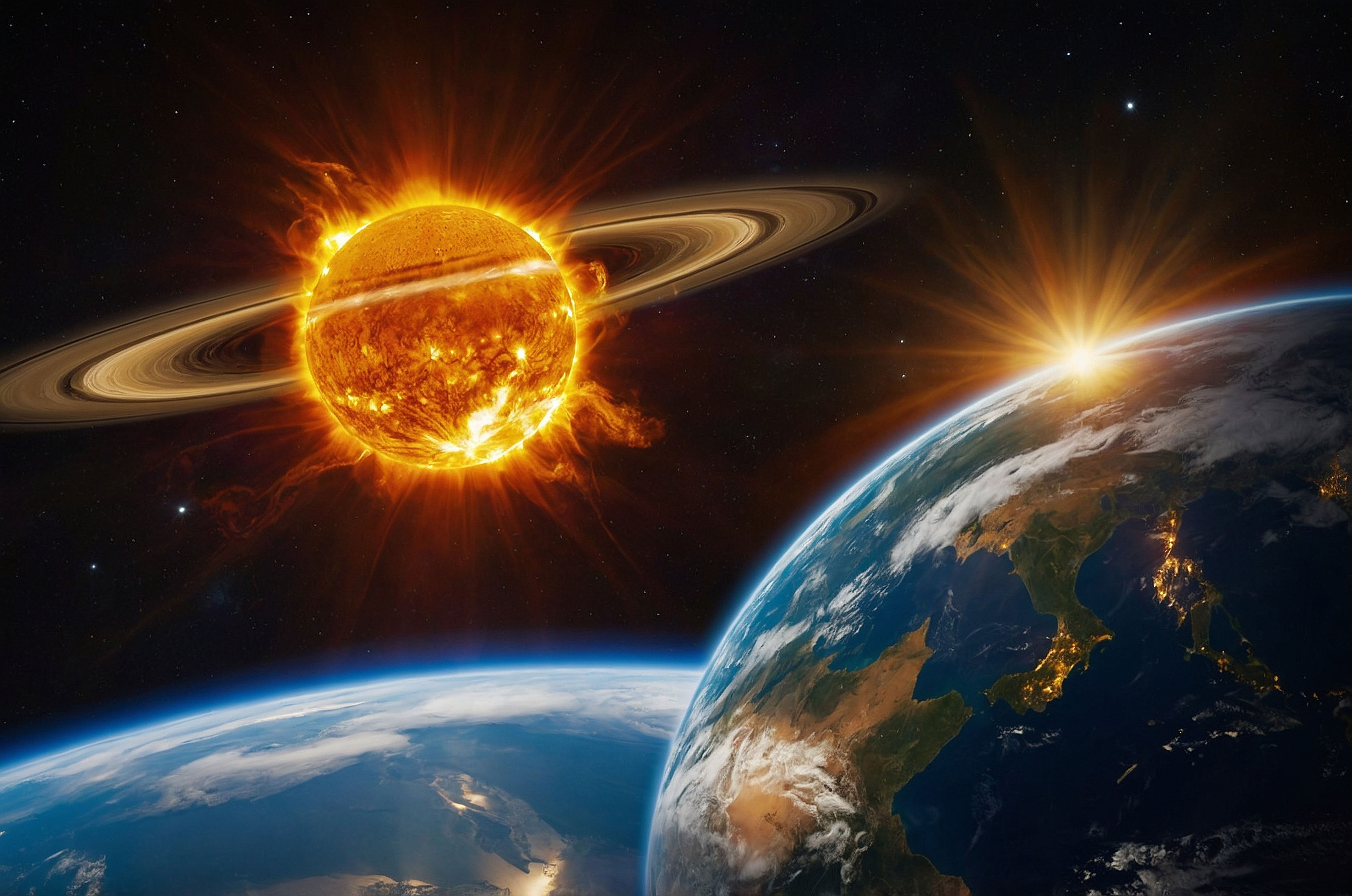Space Weather: Solar Flares and Their Impact on Earth in 2025
Introduction
Space weather, the dynamic interplay between the Sun and Earth's magnetosphere, manifests most dramatically through solar flares—sudden bursts of electromagnetic radiation from the Sun's atmosphere that can ripple across the solar system in minutes. In 2025, as Solar Cycle 25 approaches its maximum, these events have intensified, with the November 9 X1.7 flare from Active Region 4274 disrupting radio signals across the Americas and Pacific, underscoring their far-reaching effects. Solar flares, often accompanied by coronal mass ejections (CMEs), trigger geomagnetic storms that illuminate auroras, scramble GPS, and strain power grids, blending celestial beauty with terrestrial peril. As NOAA's Space Weather Prediction Center forecasts a peak activity year, enthusiasts and experts alike monitor these solar tantrums, which could elevate global temperatures by 0.1°C short-term through ozone disruption.
This primer demystifies solar flares' science, dissects their multi-layered impacts—from communication blackouts to enhanced auroral spectacles—and previews 2025's forecasts amid Cycle 25's crescendo. From the X1.8 flare on November 9 to the G3 geomagnetic storm in early November, these events remind us: the Sun's whims shape our world. Whether you're a skywatcher chasing auroras or a grid operator bracing for surges, understanding space weather equips us for a solar-charged future.
The Science of Solar Flares: Solar Dynamics and Classification
Solar flares erupt from the Sun's corona, where tangled magnetic fields in sunspots snap and reconnect, releasing pent-up energy in a flash. This process, akin to a cosmic circuit breaker, accelerates particles to near-light speeds, producing X-rays, UV, and radio waves that race to Earth at 300,000 km/s.
Magnetic Reconnection: The Trigger
Sunspots, cooler regions from intense magnetic fields, cluster in active regions like AR4274, which unleashed the November 9 X1.7 flare. Reconnection occurs when opposing fields collide, forming a current sheet that destabilizes, hurling plasma at 1,000 km/s. NASA's Solar Dynamics Observatory (SDO) imaged the event's "arcade" of loops reforming post-flare, a perpetual solar ballet.
Flare Classification and Energy Scale
Flares are ranked by X-ray flux at Earth: A (10^-8 W/m²), B (10^-7), C (10^-6), M (10^-5), and X (10^-4+). X-class are the rarest—1-2/year at maximum—but potent: The November 9 X1.7 flare, which peaked at 07:35 UTC, had a long duration that prolonged its effects. Energy? The energy from the November 9 X1.7 was equivalent to 10 million hydrogen bombs, but it was dispersed over space.
Cycle 25, peaking in 2025, amplifies activity; SWPC's November 7 report notes a fast solar wind stream fueling G3 storms, with more CMEs inbound. YouTube's October 15 forecast predicted escalating flares, aligning with the November burst.
Solar Flares' Journey to Earth: CMEs and Geomagnetic Storms
Not all flares reach Earth impactfully; those do when accompanied by CMEs—billion-ton plasma clouds erupting at 1-3 million km/h, arriving 1-3 days later.
Coronal Mass Ejections: Solar Sneezes
The November 9 flare's CME, per Watchers.news, produced a large halo event, Earth-directed and arriving November 11-12, potentially triggering R2-R3 radio blackouts and G1-G2 storms. CMEs compress Earth's magnetosphere upon arrival, inducing currents that disrupt satellites and grids.
Geomagnetic Storms: The Terrestrial Tango
Storms are classified from G1 (minor, Kp5) to G5 (extreme, Kp9). November 6-7's G3 (Kp7), per SpaceWeatherLive, stemmed from a CME, causing auroras to 40°N latitude. The Kp index measures turbulence; G3 risks HF radio fades, as in the Americas' November 9 blackout.

Impacts on Earth: From Auroras to Disruptions
Solar flares and storms paint a dual portrait: celestial splendor and technological peril.
Auroral Displays: Nature's Light Show
Storms energize particles, slamming them into the atmosphere for auroras—greens from oxygen at 100km, reds from nitrogen at 200km. November 2025's G3 storm lit skies from Alaska to Nebraska, per NOAA, with solar wind speeds 800 km/s. Enthusiasts chase "protest flares"—smaller bursts amplifying displays.
Technological Disruptions
- Radio Blackouts: Flares ionize D-layer, absorbing HF signals; November 9's X1.7 caused R3 blackouts across Pacific/Americas, grounding aviation.
- GPS/Communication: Storms induce ionospheric scintillation, erroring signals by 10-30 m; 2025's Cycle 25 risks 15% more outages.
- Power Grids: G4+ storms surge transformers, as 1989's Quebec blackout cost $2B; 2025's G3 spared major damage but stressed grids.
- Satellites: Drag from the expanded thermosphere tumbles orbits; Starlink is mitigated via maneuvers.
A NOAA excerpt warns 2025's maximum amplifies risks—G5 events like Carrington 1859 could blackout continents today.
Biological and Climate Effects
Flares boost UV, raising skin cancer risks 5% during peaks and ozone depletion 10% temporarily. Long-term: Solar variability modulates climate by 0.1°C, per 2025 studies.
Monitoring and Forecasting: Tools and Agencies
NOAA's SWPC leads, issuing alerts via SpaceWeather.gov; 2025's GOES-19 satellite tracks flares in real-time. Apps like SpaceWeatherLive predict storms 72 hours ahead. AI models, per Meteoagent, forecast flares with 80% accuracy.
Preparedness: Mitigating Solar Storm Risks
- Infrastructure: Hardened transformers; NASA's 2025 guidelines for grids.
- Communication: Satellite redundancies; FAA's 2025 playbook for aviation.
- Personal: Faraday pouches for devices; NOAA's app alerts.
A 2025 APTIM excerpt urges four steps: monitor, secure, backup, and plan.
2025 Solar Cycle 25: Peaks and Perils
Cycle 25, peaking in 2025, forecasts 115 sunspots—similar to 24 but with stronger flares. November's X1.8 flare heralds escalation; SpaceWeatherLive logs G3 storms. YouTube forecasts November 6's wave as a precursor to December peaks.
Conclusion
Space weather's solar flares in 2025—from November's X1.7 blackout to G3 auroras—remind us of the Sun's capricious power. As Cycle 25 peaks, monitor via NOAA, prepare grids, and chase the lights—our star's tantrums, though disruptive, paint the sky eternal.